What’s for Breakfast?

Kim Goss BFS Editor
Practical guidelines on what to eat for peak performance
It’s been said that breakfast is the most important meal of the day, but why? Dinner is usually the largest and most complete meal of the day, so certainly a case can be made for it being #1. Let’s see what the research says, and along the way, take a closer look at what athletes should eat, and not eat, on the first meal of the day.
First, consider that the word breakfast breaks down into two words, “Break” and “Fast.” Thus, breakfast can be defined as the meal that “breaks” the “fasting period” of the last meal of the previous day. If you consume your first meal at noon, that’s your breakfast! So forget about terms such as breakfast, brunch, and even liner (ah, the meal between lunch and dinner?) -- breakfast is simply the first meal of the day.

In looking at the science, many studies have been conducted worldwide that found a link between obesity and skipping breakfast. One of the largest was published in 2013 in the journal, Circulation. This study involved 26,902 men who were followed over 16 years. One of the most significant findings was that those who consumed breakfast had a significantly lower risk of coronary heart disease. However, “when” you have your first meal is not as important as “what” you eat.
Just because bacon, eggs, pancakes, and cereals are popular in the US, that doesn’t mean that the rest of the world has caught on. If you woke up today in Europe, your breakfast might consist of fruit, jam, and pastry. In Korea, you might ask what the soup of the day is; and, in Finland, your morning routine might include tea and sandwiches. As for Japan, your first meal of the day probably looks like any other meal, perhaps consisting of a plate filled with salmon, pickled vegetables, and rice. That said, how does your breakfast stack up from a nutritional perspective?
Let’s start with a standard diner affair of bacon, eggs, and orange juice. Eggs are high quality, protein-packed food, but eating eggs every day may cause food allergies. Bacon certainly contains protein, but it’s not simply a slice of meat thrown on a frying pan – it is usually loaded with salt, food preservatives, and processed to the point where you’ll be just as well off eating a hotdog. How about good ole OJ? Well, most of the orange juice products you’ll find at grocery stores and restaurants are filtered, thus removing many of the nutrients and fiber, and packed with refined sugar that gives them the nutritional quality of a can of soda. OK, how about cereal?
Certainly, there are healthy cereals available. For example, oats contain fiber, antioxidants, and are packed with vitamins and minerals. Unfortunately, what you’ll find in most cereal boxes are concoctions of modified corn starch, corn syrup, salt, gelatin, dyes and…well, you might be better off eating the box! But let’s focus on sugar, which many commercial cereals are loaded with.
Processed sugar is a big issue for breakfast because it can establish a pattern of unhealthy eating, and overeating, throughout the day. Why? Because sugar causes a rapid spike in blood sugar, which is followed by a sudden and extended drop in blood sugar that can make you drowsy and affect your ability to concentrate. To return your blood sugar to normal your body will crave carbohydrates, creating a cycle of overeating throughout the day.
Now that we have some ideas about what’s wrong with our breakfast, let’s focus on how we can fix it.

A Breakfast for Champions
Two primary ingredients of a healthy breakfast are protein and “healthy fats,” such as the fats found in seeds, nuts, olive oil, and coconut oil. Fats not only contain important nutrients (including those that produce hormones), but also slows digestion to aid nutrient absorption, prolong satiety (such that you can go longer without hunger), and help stabilize your blood sugar to keep you alert.
If you think about it, in nature, protein and fats are often found together – meat, eggs, and milk are examples of high-protein foods that contain fat. Consuming protein by itself, such as a whey protein drink mixed with water, is not a good idea because it can cause gut issues, along with other health problems. In fact, in 1978, at least 60 deaths were reported to FDA or CDC from using a liquid protein diet!
At this point you may ask, “If my ‘Grand Slam Breakfast’ is not a home run, what can I eat?” Although providing detailed breakfast menus is beyond the scope of this article, here are a few meal planning strategies.
First, try to vary your protein sources to avoid food allergies. For example, on Monday, your primary breakfast protein could be eggs; Tuesday, turkey; Wednesday, ground beef; Thursday, chicken; Friday, fish. Simple enough!
As for healthy fats, nuts will get the job done. However, when we talk about nuts, we’re talking about foods such as macadamia nuts, cashews, and almonds. Peanuts, which do not grow on trees, are not nuts but legumes. For many, peanuts can trigger food allergies, which can have life-threatening consequences. Research presented in 2017 at a meeting of the American College of Allergy, Asthma, and Immunology suggests that peanut allergy in children increased 21 percent since 2010. If you’re not certain if you’re allergic to peanuts, or any other food for that matter, get tested. Oh, and if you’re not nuts for nuts, consider seeds. Nutrient-packed seeds include pumpkin, sunflower, flax, chia, and sesame.

Now let’s talk about carbs.
According to our friends at the Centers for Disease Control, only 1 in 10 Americans consumes enough fruits and vegetables per day. For fruit, a cup of strawberries, an apple, orange slices, half a cantaloupe, and so on will get the job done – and if having fruit for breakfast doesn’t appeal to you, save it for a snack.
For vegetables, good high-fiber choices include cauliflower, spinach, celery, carrots, and broccoli. If eating raw vegetables doesn’t appeal to you, try steaming them or combining them in an omelet. Yes, we realize there is a school of thought that says you should not combine fruit with vegetables. However, the Academy of Nutrition and Dietetics added that there is no research to prove that consuming food groups separately with promote detoxification or help with weight loss.
As we have different tastes and food tolerances, it’s impossible to present an extensive list of healthy breakfasts you will like – you simply have to experiment. For example, you might try 3 ounces of smoked salmon with sliced cucumbers and tomatoes; a venison steak with a handful of cashews, an apple, and sliced carrots; or maybe a 4-egg omelet (with onions, pepper, tomato, mushrooms), a pink grapefruit, and a tablespoon of almond butter on spelt bread. Again, the idea is to think about starting your day with high-quality protein, healthy fats, and quality carbs from fruits and vegetables.
It’s New Year’s Resolution time, and one promise that will improve the quality of your life and improve athletic performance is to start your day with a nutritionally sound breakfast. As Tony the Tiger would say, “A healthy breakfast is Grrrrrreat!”
More on youth training:
Recommendations From the Mayo Clinic
Young Athlete Impact with BFS
BFS Impacts Generations at Southwest Middle School
REFERENCES
https://www.ahajournals.org/doi/abs/10.1161/circulationaha.113.001474
